You know it when you feel it—when you feel strong in movement, stable when you’re trying not to and balanced in posture. It all comes from a strong core. In broad, uncomplicated terms, the “core” is everything from your hips to your armpits.
But training the core isn’t as fun as it used to be. There are too many misguided, frequently incorrect efforts to list off all the things you should avoid when training the core. You’re never supposed to crunch, you should only train anti-rotation exercises because, some espouse, rotation is “dangerous,” and you should only train the core using standing exercises. Extreme views are usually an unwise approach in life. The core is best trained with an inclusive approach and that means there are few exercises that are absolutely wrong, provided you know what you’re trying to do and how to do it.
Here are two simple guidelines I use for all training, not just core training:
- If you need to do it, you need to train for it.
- If you might need to do it, you need to train for it.
You have to train the core both standing and on the floor. You have to crunch a little, so you’re good at it when you need to move off the floor. You have to both create and prevent rotation.
So relax. Well, don’t fully relax as we’ve got a workout to do, but stop worrying about what you should and shouldn’t do. You’ll get the fun back to working the core with this workout, which features a TRX Suspension Trainer.
Here are the variables we will use to create a complete workout experience for the core:
- Speed – Moving both fast and slow is essential. Life has many speeds and if you’re good at all of them, you’re good at moving in your life.
- Stability – In order to move, there needs to be stability somewhere else. At other times, you might need to completely prevent movement or stop and re-start movement.
- Mobility – Expressing control through a full range of motion allows you to move comfortably in life, doing all that you need to do
- Asymmetry – Life is rarely symmetrical, while many common exercises often are symmetrical. Using asymmetry is like getting extra core work for free, because you get a reflex contraction from your body’s efforts to maintain stability. (For example, carrying a suitcase or heavy bucket and preventing yourself from leaning.)
The Plan: Perform the following six exercises two times as a circuit. These exercises are best done with time-based sets, because counting reps doesn’t fit well with the variables we are using. Start with a work-to-rest ratio of (20 seconds work:20 seconds rest.) In week two, increase work to 25 seconds. For weeks three and four, increase work to 30 seconds. Perform this circuit three to four times per week.
The Wildcard: Once per week, mix up the order of the exercises any way you like; for example, odd numbers before even, pair up exercises that add up to seven (6 and 1, 5 and 2, etc.), or in reverse order from 6 to 1, or your own fun idea.
The Exercises: The name of each exercise is followed by a parenthetical list of the variables that are challenged by each movement. Wherever you see “(2 sets)” listed, perform one set on each side before continuing to the next exercise. All of the exercises except #5 below (which is set to mid-length) use a length setting that allows you to have your feet in the foot cradles. I created two of these moves–#3 and #6—for my book, Abs Revealed, while the others are more recent creations.
|
Exercise |
Asymmetry |
Stability |
Mobility |
Speed |
|
1. Rocking Bicycle (alternate sides each rep) |
X |
X |
|
X (fast) |
|
2. Knee Tuck (2 sets) |
X |
|
X |
|
|
3. Pendulum Mountain Climber |
X |
X |
|
X (fast) |
|
4. Knee Tuck to Pike |
|
X |
X |
X (slow) |
|
5. Standing Side Plank + Push or Chop (2 sets) |
X |
X |
X |
|
|
6. Hip Roll With Thread the Needle (2 sets) |
X |
X |
X |
|
Rocking Bicycle
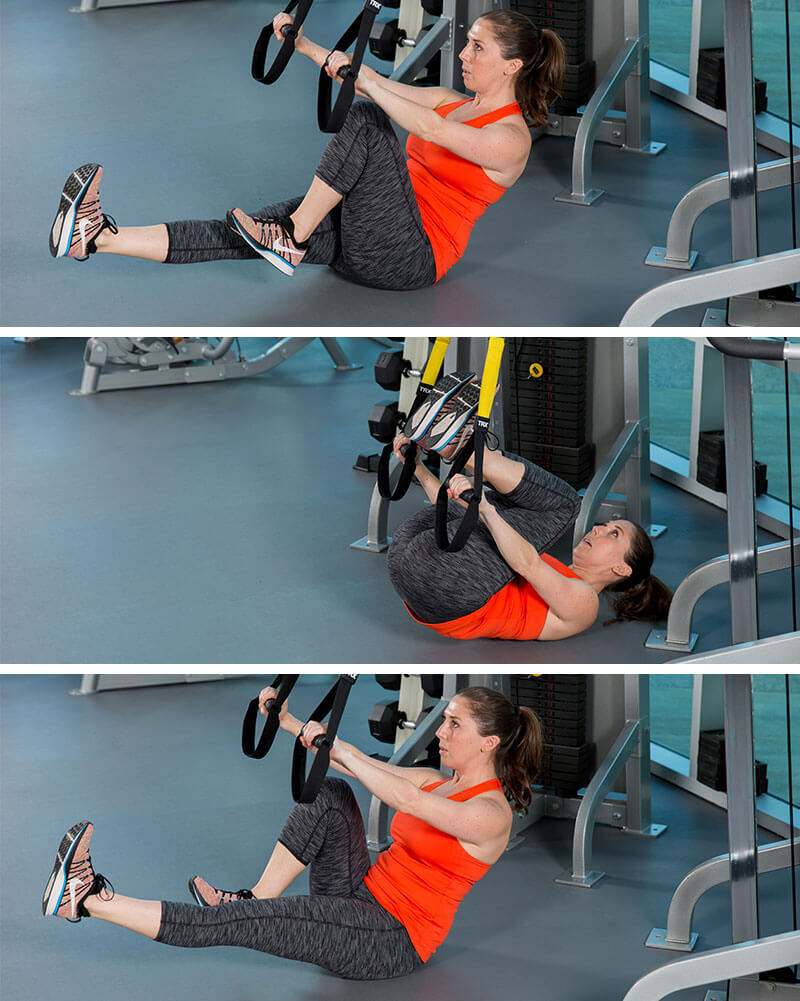
Knee Tuck
Pendulum Mountain Climber
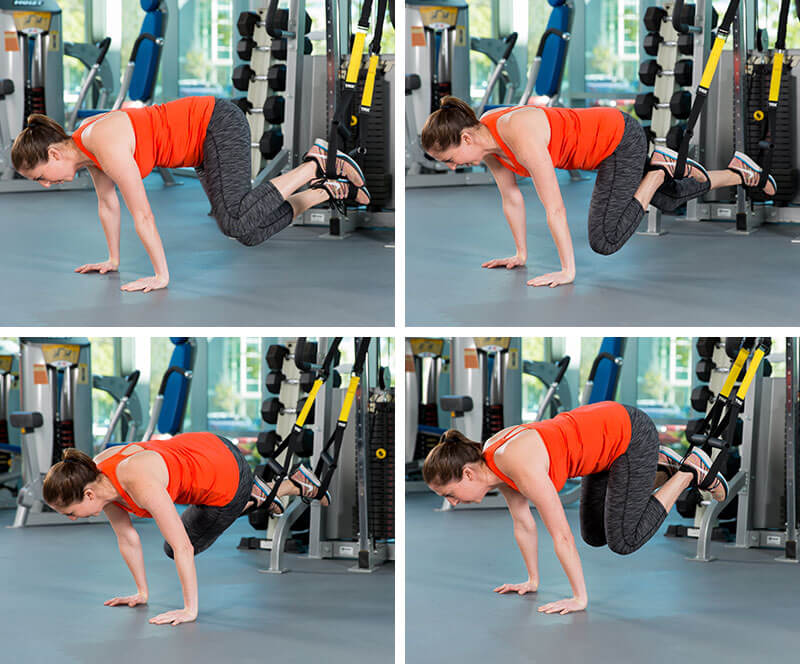
Knee Tuck to Pike
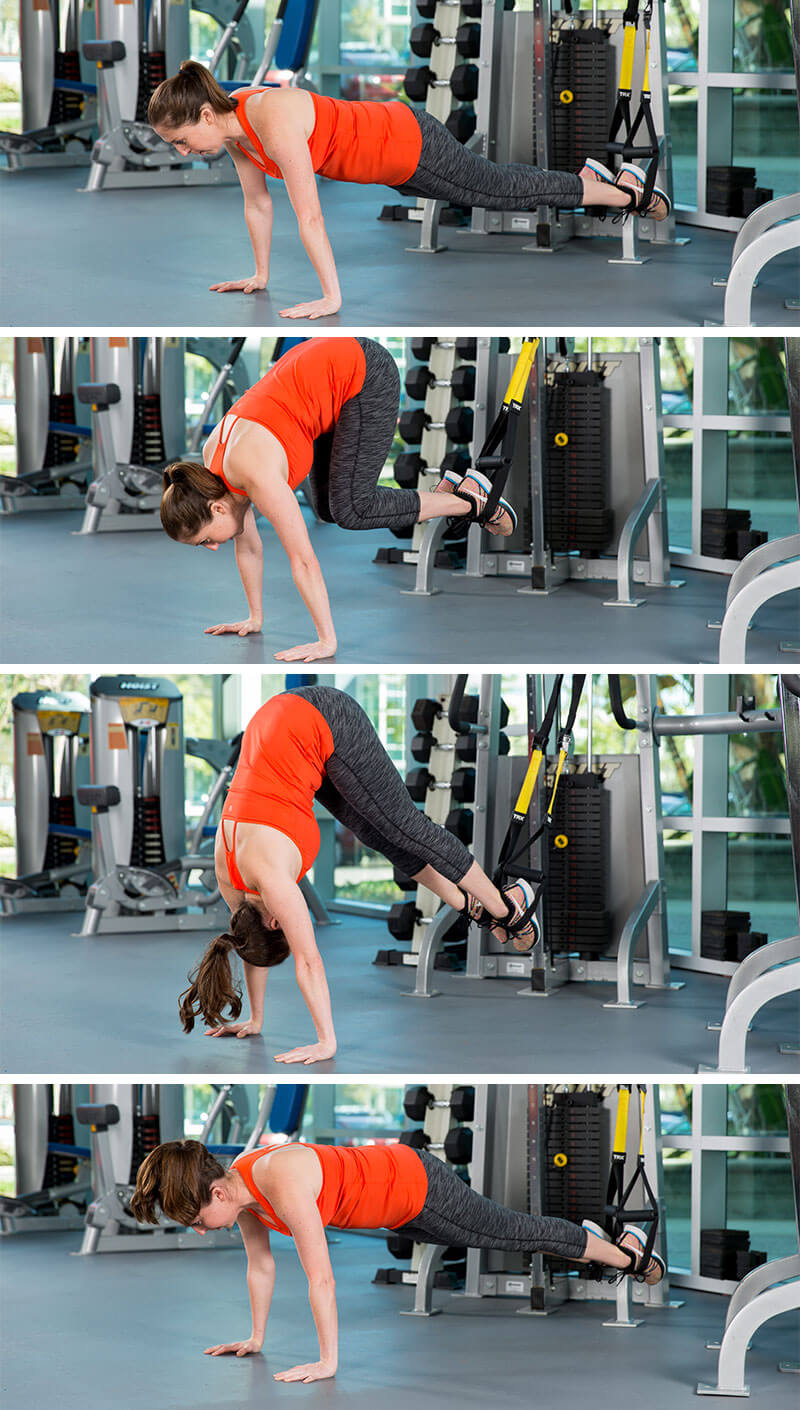
Standing Side Plank + Push or Chop
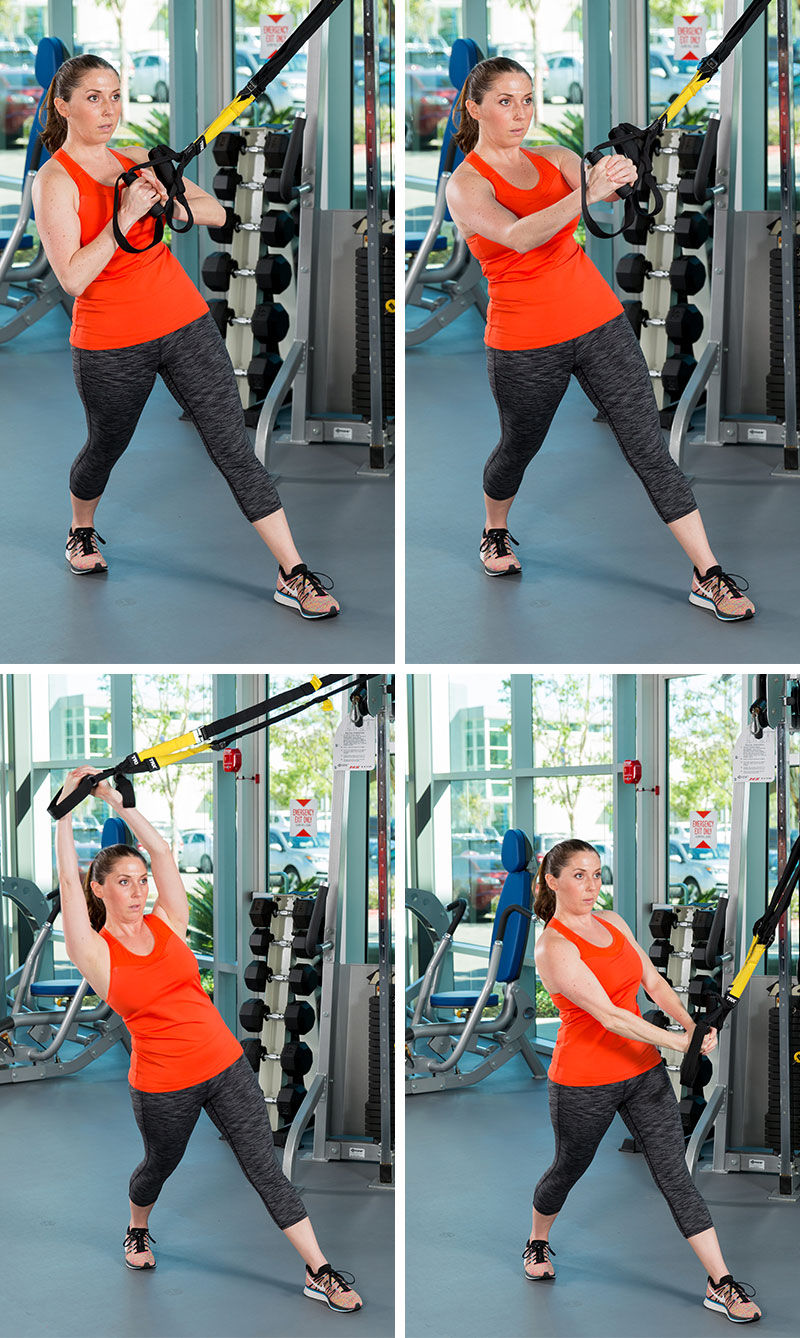
Hip Roll With Thread the Needle
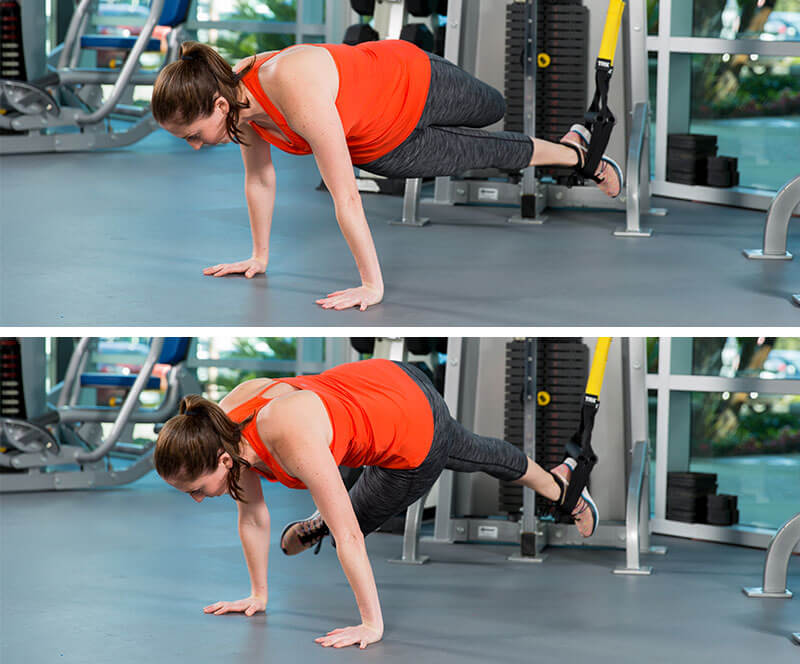
Note: “Speed” as a variable could potentially be confusing. It does NOT always mean fast. “Speed” is a “rate of movement.” In the table, “slow” and “fast” refer to moving either faster or slower than the default speed you would use if no speed direction were provided.
Not included in this workout are static planks, which are typically the standard go-to for core training. Life is about movement and that’s what we are training here. Planks can be thought of as a prerequisite or stepping-stone to challenging core movement. They should not be considered as an end-point in training.
Make the Connection
Once you’ve started following this workout, note how you feel throughout your day—when you’re standing in line at the grocery store, lifting something off the floor, walking the dog, or during any of life’s little moment-to-moment core challenges. You’ll be more aware of the position of your torso over your hips when moving and while being still, and you’ll be well equipped to move confidently and successfully throughout your day.




 by
by 


